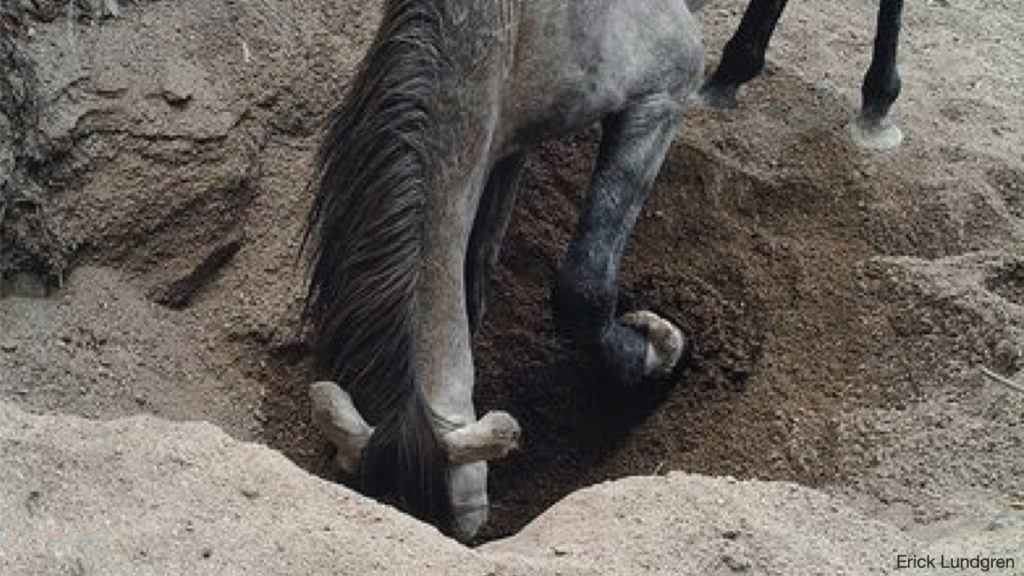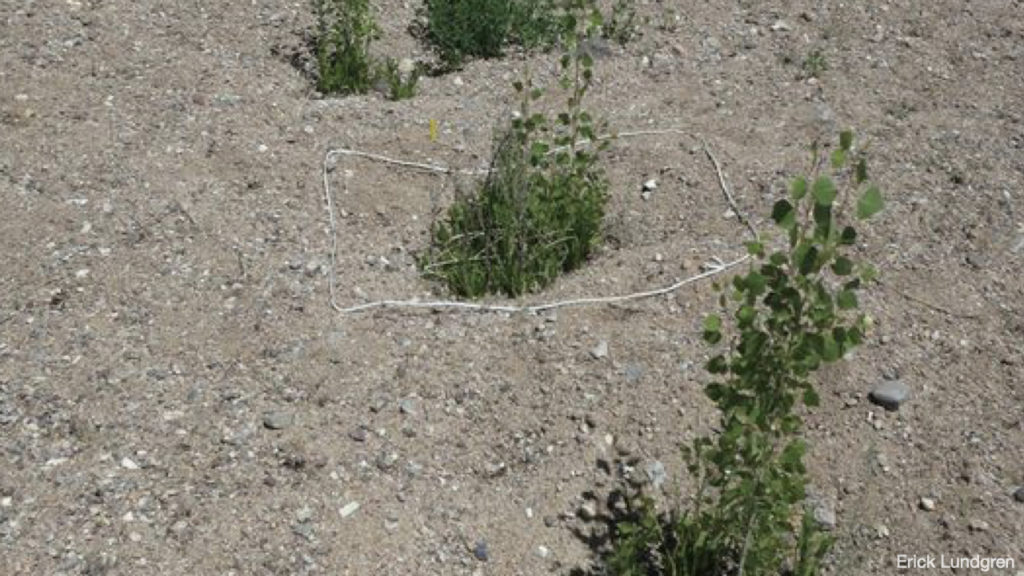Donkeys and Horses: Desert Ecosystem Engineers
Donkeys and horses were the most highly valued animals of the ancient world. These equines were the automobiles, trucks, and trains of preindustrial times. They transported humans and carried heavy loads wherever people wanted to go, in addition to performing agricultural and martial work. Worldwide, the value of donkeys and horses as beasts of burden is still high today. People also keep them as pets and therapy animals, and for a variety of sports.
Humans value donkeys and horses so much that it is rare to find any of them living in the wild. This rarity motivated a team of eight conservationists and biologists to investigate possible roles such animals might play in enhancing wild ecosystems. The team conducted field studies over a three-year period in the Sonoran Desert where feral populations of donkeys and horses have recently been established.1 Their findings show that equines are veritable desert engineers and the animals’ propensity for digging wells carries implications for climate change.
Field Study Observations
The eight scientists observed that during periods of surface water scarcity the feral donkeys and horses would sniff out subterranean water and dig wells up to 2 meters deep (see figure 1). During summers, when temperatures would cause the water evaporation rates to soar, wells dug by donkeys and horses (known as equid wells) provided 100% of the surface water in most of the desert regions surveyed. Even in regions where perennial streams existed, equid wells provided up to 74% of surface water.

Figure 1: Donkey Digging a Well in the Sonoran Desert
Image credit: Erick Lundgren
Desert water made available by feral equines quenched the thirst of nearly all the other animals cohabitating in the Sonoran Desert. The eight scientists photographed deer, bobcats, jays, passerines, and rodents visiting equid wells. In total, they observed 57 different vertebrate species drinking from these wells.
Minus feral donkeys and horses, water features in deserts can become areas of heightened antagonistic wildlife interactions.2 They can become breeding grounds for pathogenic bacteria and biting insects. They pose increased predation risk and greater competition for both water and herbivory.
The scientists determined that equid wells reduced average nearest-neighbor distances between water features by 65% and, during the hottest times of the year, by as much as 99%. They concluded that equid wells substantially reduced antagonistic interactions near water features and greatly decreased the distances animals must travel to obtain water. In other words, with water more readily available, animals did not need to fight over water access.
Equid wells yield benefits for desert vegetation as well. The researchers observed that erosion inevitably fills in the equid wells. The seeds of fast-growing flood-adapted trees take root in these abandoned equid wells (see figure 2), where the loose soil enables the newly sprouted seeds to efficiently send roots down to the water source. Thanks to equid wells, desert vegetation is enhanced, which provides more food and shade for animals. Enhanced vegetation also increases the transpiration of water to the atmosphere, which results in more precipitation.

Figure 2: Tree Taking Root in an Abandoned Equid Well
Image credit: Erick Lundgren
Feral donkeys and horses are the only large animals that dig wells in North America but this engineering effect has been observed globally. African and Asian elephants, mountain and Grevy’s zebras, gemsbok, and khulans also dig wells in their respective ecosystems.
Climate Change Mitigation
The team of eight did not address the potential role well-digging megafauna can play in mitigating climate change. Over the past 2,000 years, anthropogenic abuse and activity have increased the size of almost all Earth’s deserts, most notably the Sahara Desert (by nearly ten times) and the Gobi Desert (by four times). Purposeful introduction of well-digging megafauna into the world’s major deserts would increase desert vegetation, which in turn would increase desert precipitation. More desert precipitation would permit more vegetation to take root and grow.
Vegetation, in its photosynthesis, draws carbon dioxide from the atmosphere and stores it in the form of carbohydrates, starches, cellulose, fats, and other hydrocarbons. If more vegetation proliferates over the world’s deserts more carbon dioxide is removed from the atmosphere, which allows vegetation to support even more animal life. More vegetation and more animals can potentially provide more income for humans inhabiting the deserts. Therefore, feral donkeys and horses can play a role in mitigating climate for the economic benefit and well-being of both humans and the rest of Earth’s life.
Donkeys and Horses as Testaments of Design
The donkey is mentioned in 93 different Bible passages and the horse in 59. In my book, Hidden Treasures in the Book of Job, I described how wonderfully and uniquely designed donkeys and horses are for making possible the launch and maintenance of global civilization and the development of a large human population.3 Apparently, I underestimated all the ways our Creator designed these animals to serve us and the rest of Earth’s life and ecosystems.
Check out more from Reasons to Believe @Reasons.org
Endnotes
- Erick J. Lundgren et al., “Equids Engineer Desert Water Availability,” Science 372, no. 6541 (April 30, 2021): 491–495, doi:10.1126/science.abd6775.
- Todd C. Atwood, Tricia L. Fry, and Bruce R. Leland, “Partitioning of Anthropogenic Watering Sites by Desert Carnivores,” Journal of Wildlife Management 75, no. 7 (September 2011): 1609–1615, doi:10.1002/jwmg.225; Jared D. Rogerson, W. Sue Fairbanks, and Louis Cornicelli, “Ecology of Gastropod and Bighorn Sheep Hosts of Lungworm on Isolated, Semiarid Mountain Ranges in Utah, USA,” Journal of Wildlife Diseases 44, no. 1 (January 1, 2008): 28–44, doi:10.7589/0090-3558-44.1.28; I. Thrash, G. K. Theron, and J. du P. Bothma, “Dry Season Herbivore Densities around Drinking Troughs in the Kruger National Park,” Journal of Arid Environments 29, no. 2 (February 1995): 213–219, doi:10.1016/S0140-1963(05)80091-6.
- Hugh Ross, Hidden Treasures in the Book of Job (Grand Rapids: Baker, 2011), 156–157, 161–163.





